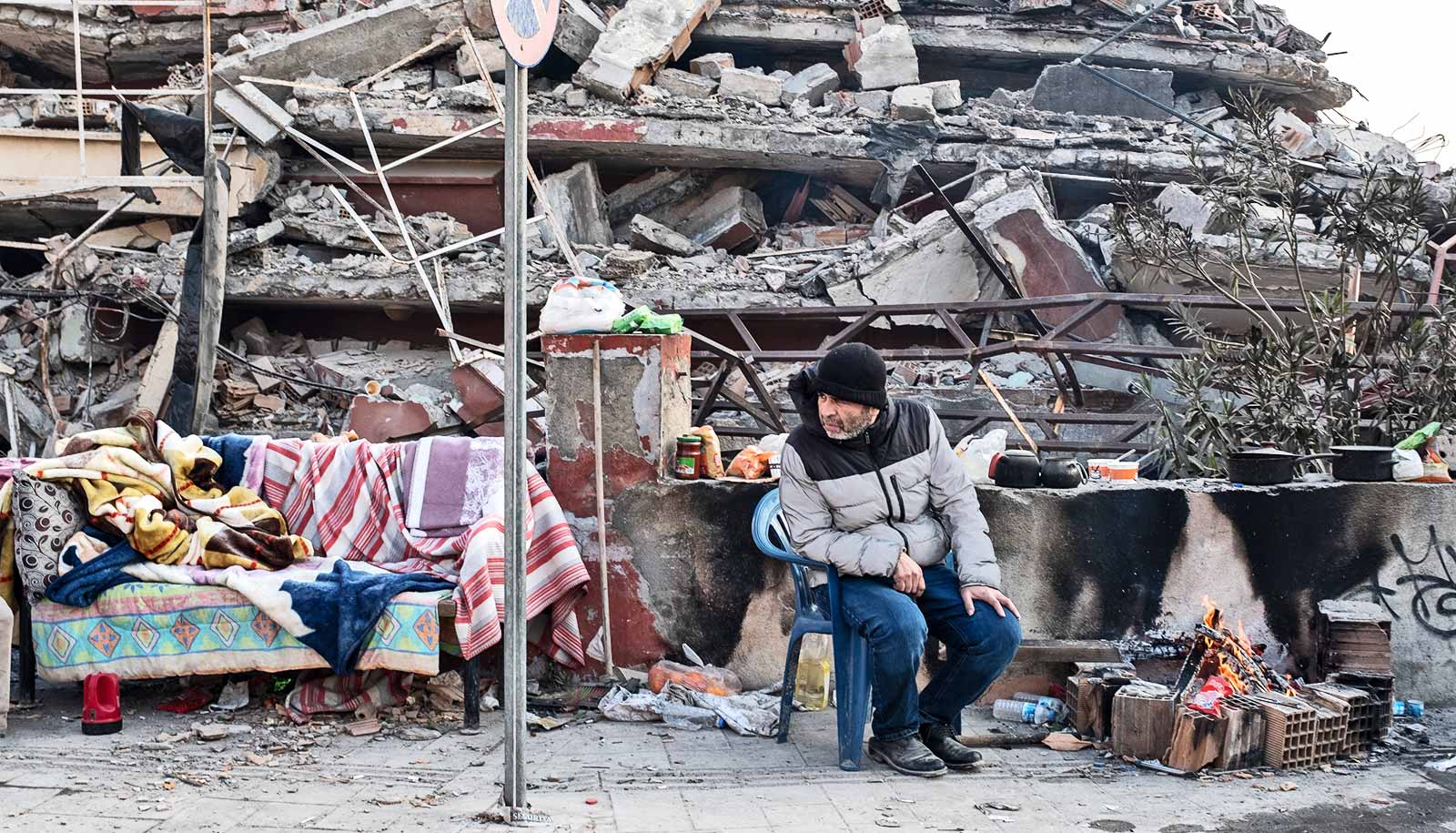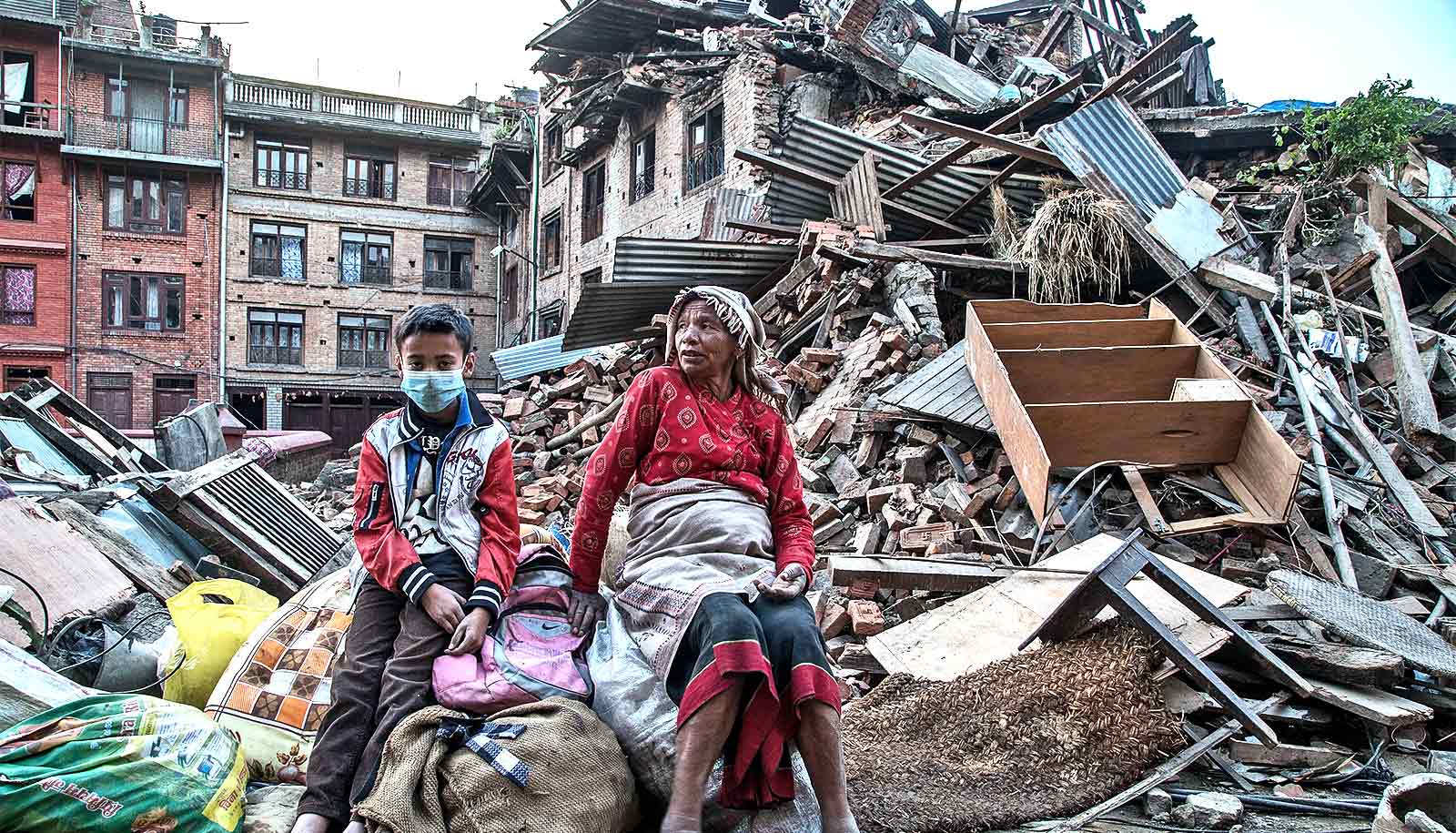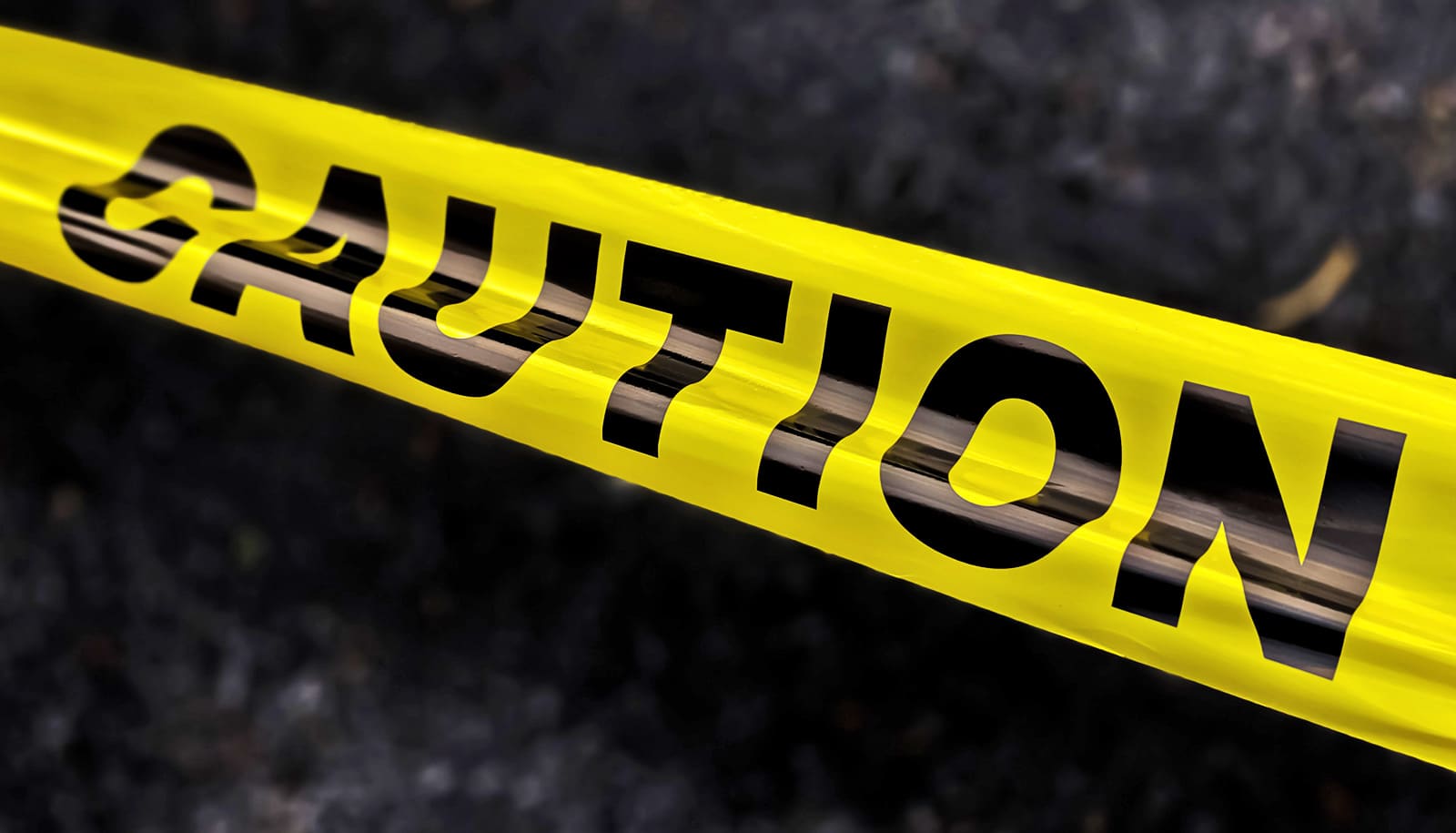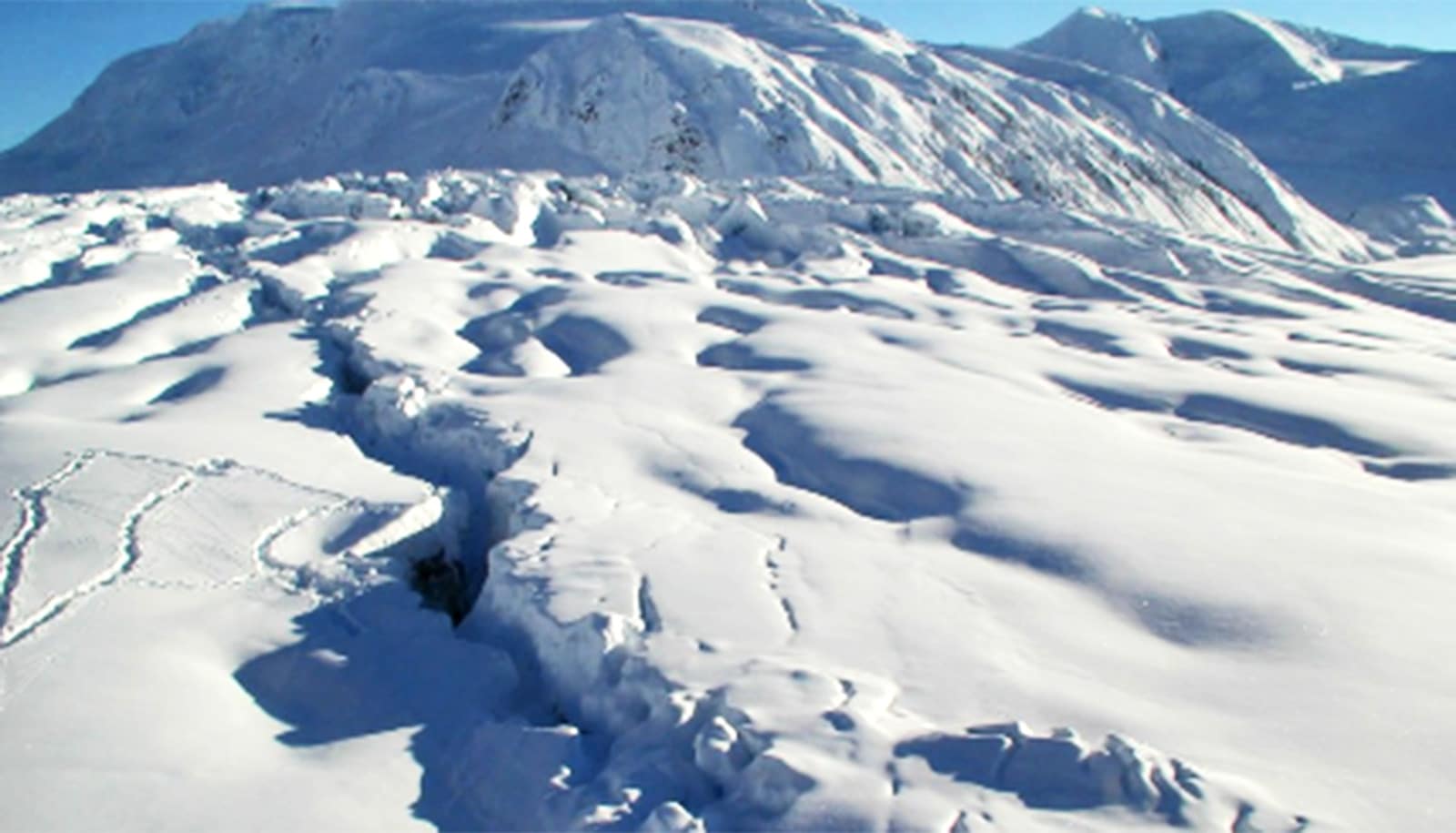Earthquakes that hit Turkey and Syria this month killed over 20,000 people and collapsed thousands of buildings. Why were they so catastrophic—and could they have been predicted?
Around 4 AM local time on Monday, February 6, two tectonic plates slipped past each other just 12 miles below southern Turkey and northern Syria, causing a 7.8 magnitude earthquake. It was the largest earthquake to hit Turkey in over 80 years. Then, just nine hours later, a second quake—registered at 7.5 magnitude—struck the same region.
The double whammy of intense shaking left behind a humanitarian crisis in an already vulnerable area. The epicenter of the quakes was near the city of Gaziantep, where there are currently hundreds of thousands of Syrian refugees. Aleppo, a city in Syria that has been destroyed by civil war, also felt the brunt of the earthquakes.
Seismologists consider Turkey a tectonically active area, where three tectonic plates—the Anatolia, Arabia, and Africa plates—touch and interact with each other. The two major fault lines surrounding it, the North Anatolian Fault and the East Anatolian Fault—which has a slip rate of between 6 and 10 millimeters per year—are gradually squeezing the country westward toward the Mediterranean Sea. Yet, many buildings in the region are not built to withstand large earthquakes, according to the US Geological Survey (USGS), making the destruction worse.
“Even if we had told all of those people the day before, or the week before, and everyone got out safely, but all those buildings still collapsed, this would still be a humanitarian tragedy,” says Rachel Abercrombie, a research professor of earth and environment at Boston University.
Abercrombie has studied earthquakes for over three decades, aiming to understand what makes some more severe than others, how they start, and what actually happens at the earthquake source. The president of the American Geophysical Union’s seismology division, she is also a co-leader of a Southern California Earthquake Center research project which works to improve measurements of stress released by earthquakes.
Here, she puts the cascading devastation into context, and talks about why the region is at high risk for earthquakes and what can be done to warn people about an impending shake before it’s too late:
What was your reaction after this shocking news?
I was trying to think, what am I feeling? Obviously, very sad. Also, I was very angry. The anger and the frustration comes from the fact that if you look at a seismic hazard map of Turkey—as seismologists, we have used earthquake recording, satellite modeling, and the geology to map where the faults are—we can tell what is moving.
The East Anatolian Fault is moving and that’s going to produce a big earthquake every 100 or 200 years. The seismic hazard map for Turkey matches this earthquake perfectly. But here’s why I’m frustrated—even if we had told all of those people the day before, or the week before, and everyone got out safely, but all those buildings still collapsed, this would still be a humanitarian tragedy.
The problem is not really the earthquake. The problem is often bad construction that isn’t earthquake safe, the building codes, and the lack of enforcement of the building codes. That’s why we’re not as worried about California, because the building codes are strong—they’re not perfect and things will fall in a big earthquake—but they’re enforced.
I know it’s not possible to predict exactly when or where an earthquake will strike. But were there any warning signs that this could happen in Turkey and Syria?
In general, sometimes we see an increase in little earthquakes before a large one. There could also be what we call a seismic slip, which is when we start to see the ground moving using GPS and radar. But then, of course, sometimes they happen without a large earthquake. And, sometimes, large earthquakes happen without any warning.
What makes this area particularly vulnerable to earthquakes?
Essentially, Turkey is slowly moving. Most of Turkey is moving out to the west, with Greece moving out with it. These two faults kind of make a “V” shape at the edges. These are the major fault zones that are causing that.
How do earthquakes start?
The easiest way of thinking about it is that the Earth is divided into plates, and their edges are the major faults. The plates are moving slowly, and this gradually increases the stress on the edge [of a plate] when it gets stuck, until it breaks loose. That’s the earthquake, that sudden breaking loose. Then it gets stuck again and then gets unstuck again. In this case, we’re talking about a vertical fault moving side to side. It’s what we call a left-lateral fault, meaning that whichever side you stand on, the other side will move to your left. The San Andreas Fault in California is a right-lateral fault, so whichever side you stand on, the other side will move to your right. There’s going to be more and more pictures coming out where you can see the lines cracking across roads. It’s mind-boggling—all the roads just got permanently moved.
How do you study earthquakes?
Some scientists go out and measure how much it [a fault] slipped. People like myself are using the seismic waves and their frequency content, because the frequency spectrum contains information about the area of fault that slipped.
I’m really interested in what controls an earthquake. We know earthquakes happen mostly on the faults. But there could be a big fault that doesn’t seem to do anything for hundreds or thousands of years. Then suddenly, within seconds, a crack bigger than you can believe moves at speeds of kilometers a second. How do you go from one thing to the other?
To understand the earthquake hazard around here, for example, we have to look at earthquakes that happen elsewhere. Can we take these earthquakes in Syria and Turkey and try to understand what might happen if we had a similar-sized earthquake, which we will, in California? I’m looking to understand how the seismic waves propagate through the Earth, how much energy stays in them as they travel, which is different in different parts of the Earth because the rocks are different. The earthquake itself may be different too.
My work has been trying to get better measurements of what actually happened at the earthquake source, and also any seismicity leading up to that, to see if we can better understand what controls it. That’s proved extremely tricky.
Unlike in a laboratory setting where you can vary the experimental conditions, I have worked on earthquakes in many different places—California, New Zealand, Japan, induced earthquakes in Oklahoma—trying to get better measurements, and see if we can actually place some useful constraints on stress release. I’m also coordinating with a colleague at the USGS [United States Geological Survey] and the Southern California Earthquake Center, trying to get the community to improve our measurements of the stress release of the earthquake source.
Once a place has a big earthquake, does that make it more likely to happen again?
That’s something we would like to know. In the short term, we think it’s less likely. It’s hard to imagine how you could have a magnitude 7.8 on that piece of fault again, because there has to be a buildup [of stress] on the tectonic plates for the plates to move. Since they’re only moving at a few centimeters a year, it takes a while for that to happen. For some bizarre reason, if there’s still some slip waiting to happen while everything’s already shaking up, another big earthquake could happen, but usually that doesn’t happen.
Are those considered aftershocks, then?
Foreshocks and aftershocks don’t really have very good definitions, they are just earthquakes that occur before or after the biggest one. Aftershocks, including large ones, occur more frequently at the beginning and then they gradually fall off with time.
You can imagine that the piece of Earth surrounding the original earthquake has got a bit of extra stress put on it because things never move smoothly. Aftershocks are part of the gradual settling down after the big changes caused by the largest earthquake. Part of the settling down might be that another fault, which has 100 ‘s of years of stress built up, also breaks. That was probably what caused the second earthquake after the 7.8 one.
What improvements would you like to see as far as how earthquakes are handled?
We’d obviously love to be able to predict earthquakes. As I said, I’m a bit skeptical because you’d still be left with the destruction. Currently, earthquake scientists are working to better their hazard forecasting to prepare people for earthquakes. There’s also lots of work being done in laboratories. Another area of research is improving hazard maps to make them more dynamic, but that is more for the long term so we can see changes with time.
At the opposite end of the scale, is earthquake early warning. It’s working in California, Oregon, and Washington, and various other parts of the world. Anyone can get an app on their phone so when an earthquake happens, and the seismometers start to move, they get an alert at speeds faster than the seismic waves travel. This can be very useful to massively minimize damages—it enables emergency services to be prepared and people can turn off their gas tanks, turn off the water, and “drop, cover and hold.” The BART [transit system] in Northern California is using that, so as soon as they get an alert, all the trains stop.
You don’t go to sea in an unseaworthy boat and blame it on the sea. We’ve got to use our longer-term predictions to say, we’ve got to reinforce buildings in the highest hazard areas, and so on.
There’s a lot we can do to prepare, but really, it’s fixing bad construction. As you’re thinking about giving money for relief and reconstruction, is that reconstruction going to be earthquake-safe? I’d encourage folks donating money to relief efforts to also consider organizations doing disaster prevention work (one is GeoHazards International) to stop this happening somewhere else.
Source: Boston University



